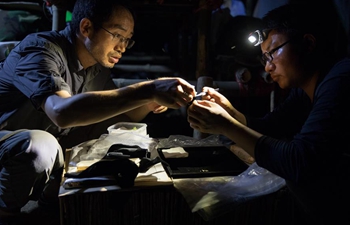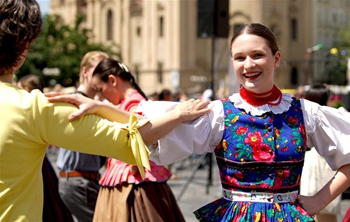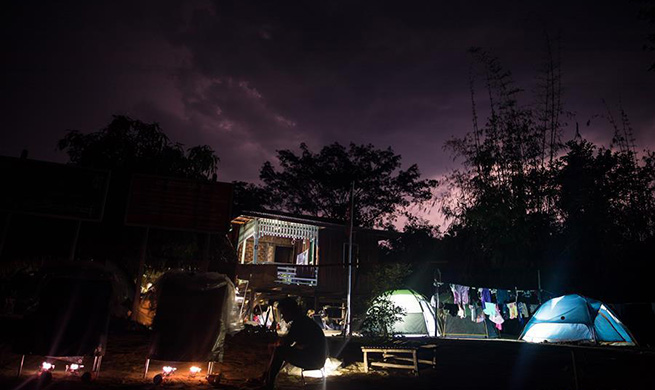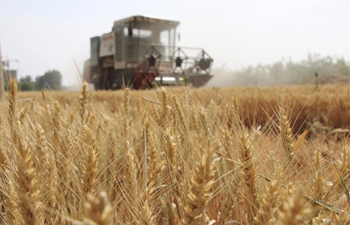MANILA, June 4 (Xinhua) -- The Philippines on Tuesday sent a pair of Philippine eagles to Singapore, a move aimed at helping preserve the critically endangered raptors endemic to the Philippines.
The Department of Foreign Affairs (DFA) of the Philippines said the pair departed to Singapore under a Wildlife Loan Agreement (WLA) between the Department of Environment and Natural Resources (DENR) of the Philippines and the Wildlife Reserves Singapore (WRS).
The DFA said the two Philippine eagles, named Geothermica and Sambisig, a 15-year-old male and 17-year old female, respectively, will be provided to the WRS and housed in Jurong Bird Park for captive breeding, as a further conservation measure.
The two raptors will be staying at Jurong Bird Park, the largest bird park in Asia that is home to close to 3,500 birds across 400 species, of which 20 percent is threatened.
At the send-off ceremony in Manila, Philippine Foreign Assistant Secretary Meynardo Montealegre presented symbolic passports under the name of the two eagles to Philippine Eagle Foundation (PEF) Chairman Ed Chua.
"The passports underscore the Philippine identity of both eagles, doing their share in representing the country abroad, and that they remain the property of the Philippine government," Montealegre said.
The project, which marks the first-ever overseas loan of Philippine eagles, will enable Singapore to collaborate with the Philippines on preserving the eagles.
According to the Philippine government, Singapore has experts who can help in looking after the eagles.
The Philippine eagle, the national bird of the Philippines, is featured prominently in the current Philippine electronic passport.
The two eagles were bred in captivity at the Philippines Eagle Center in Davao City on Mindanao in the southern Philippines. Both were under the care of the PEF.
The Philippine eagle can live up to over 40 years in captivity but probably much less in the wild. It feeds mainly on flying lemurs, palm civets and monkeys, hence the alternative common name of "monkey-eating eagle." Other prey items include rats, snakes, flying squirrels, birds and bats.
This species is found on parts of the larger main islands of Luzon, Samar and Leyte in the central Philippines and Mindanao in the southern Philippines.
Philippine eagle lays an egg once in two years, making it difficult to propagate the species. It is estimated that fewer than 50 pairs of eagles remained in the wild.













